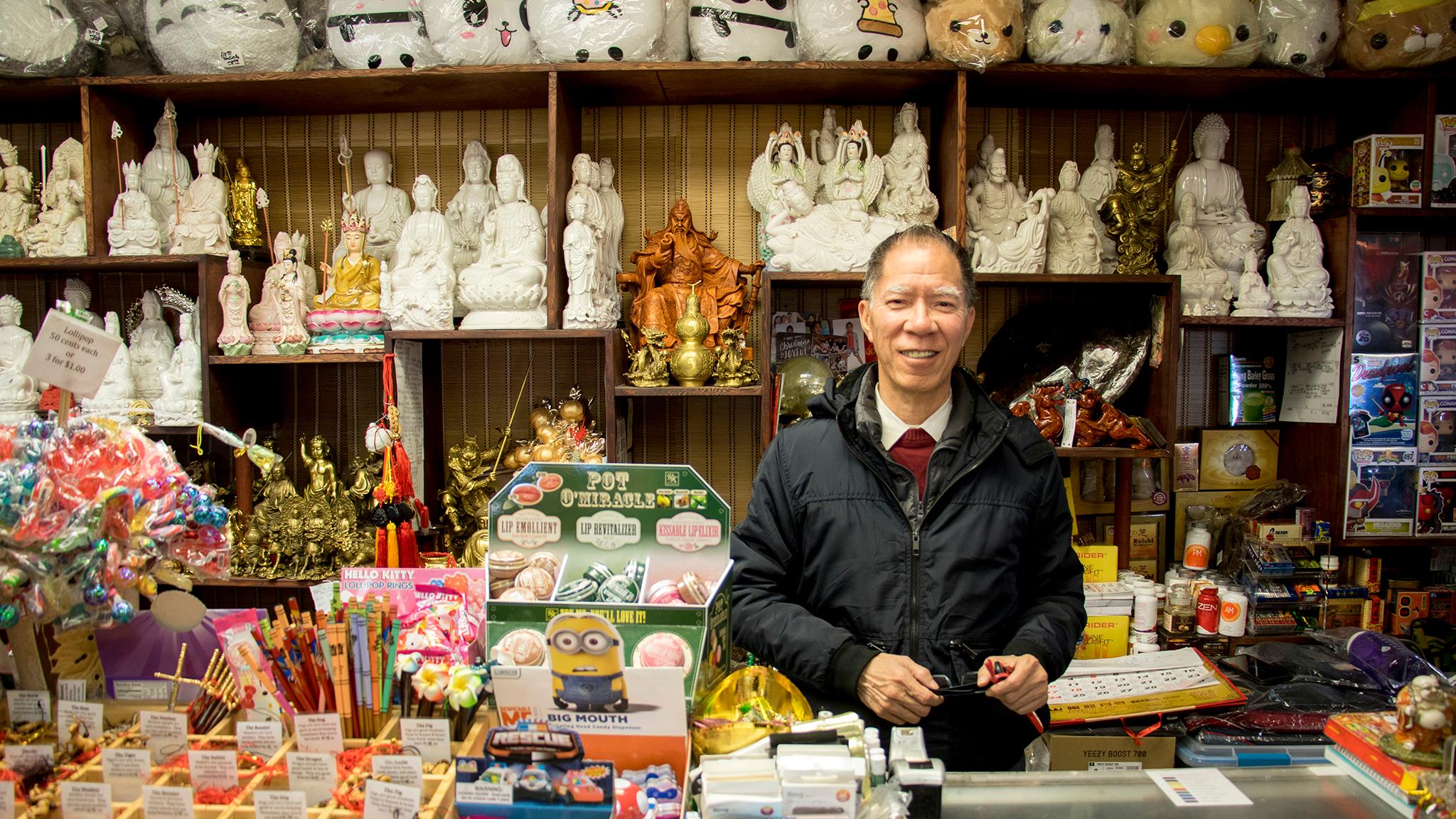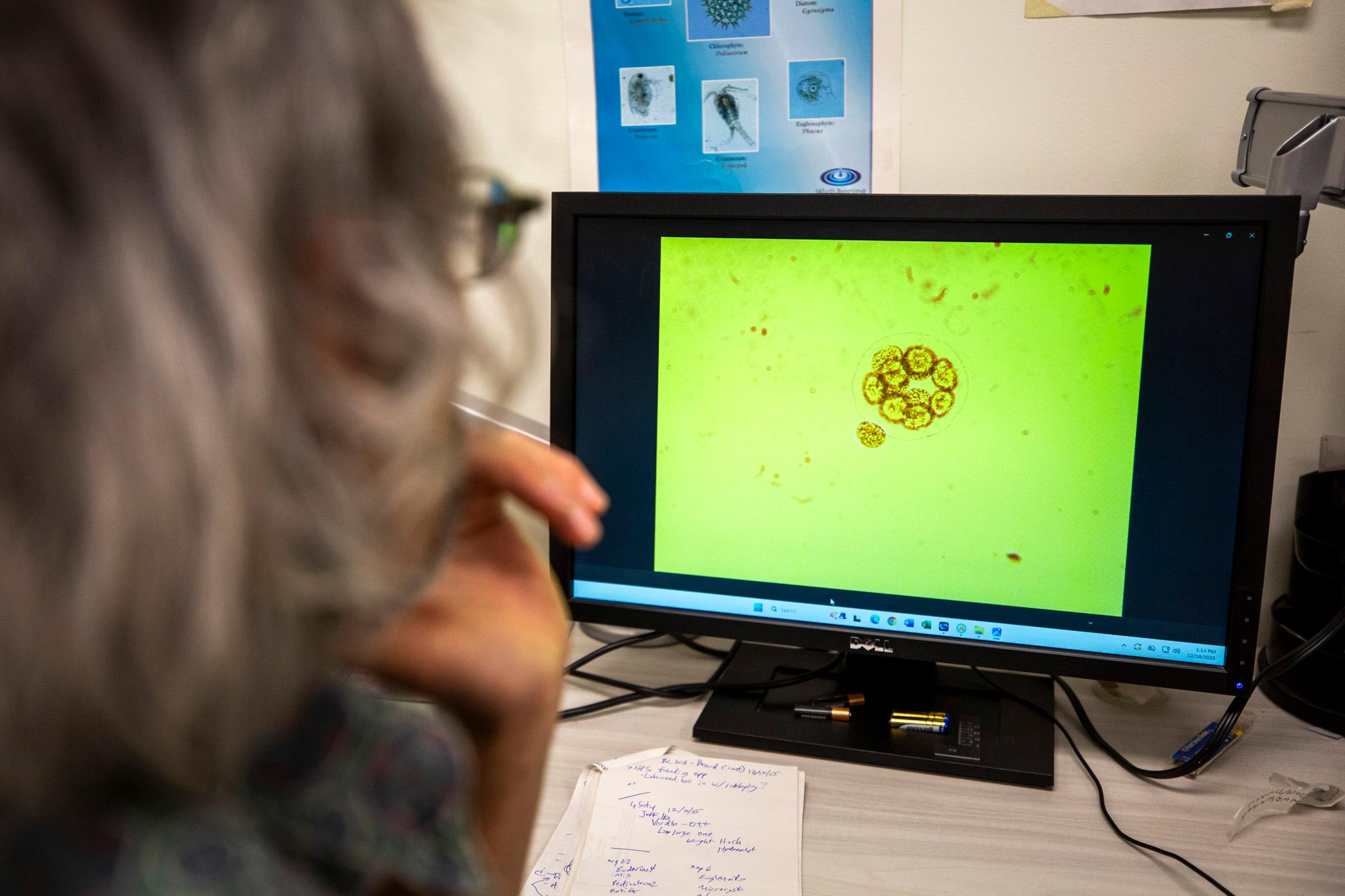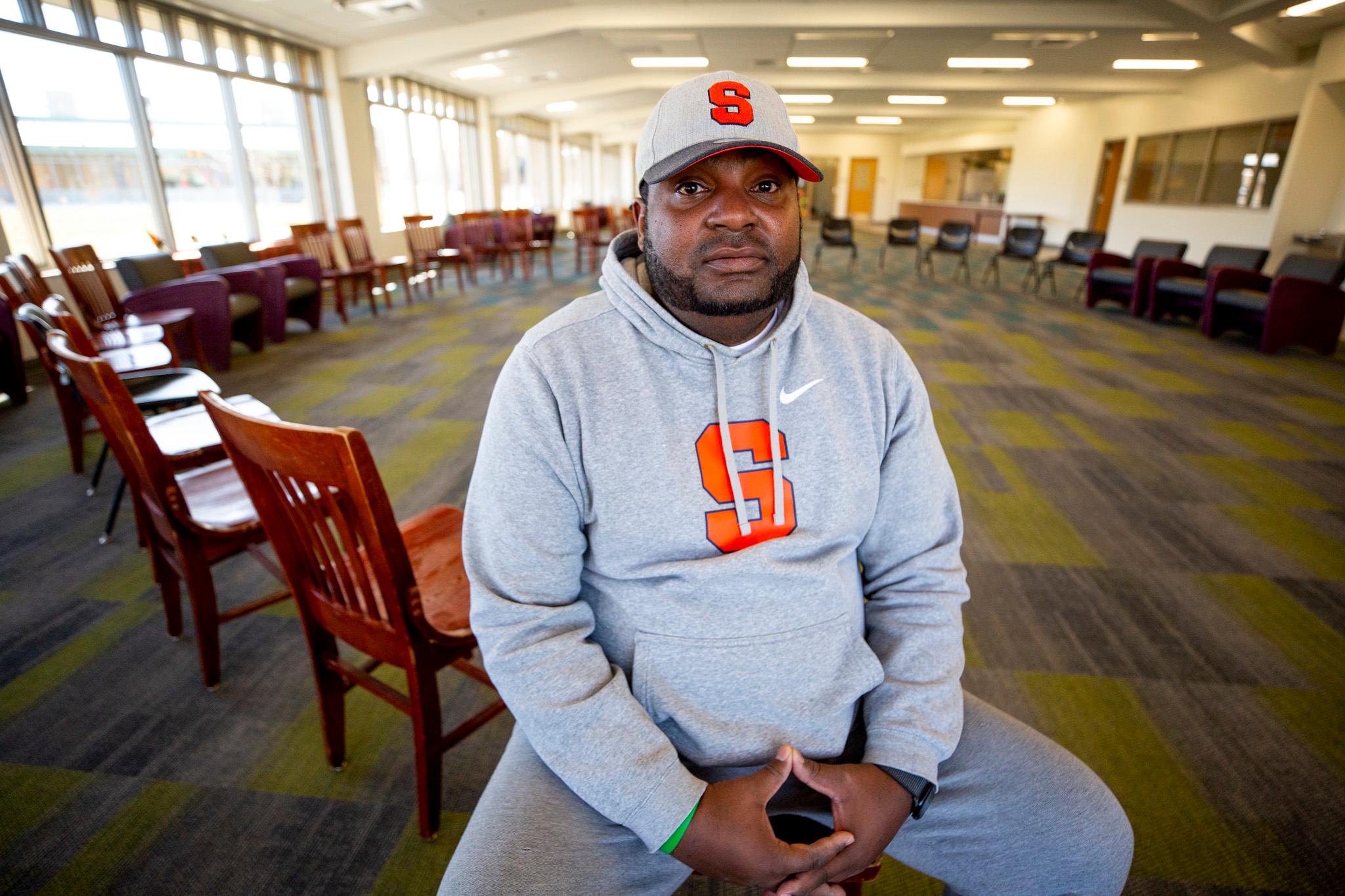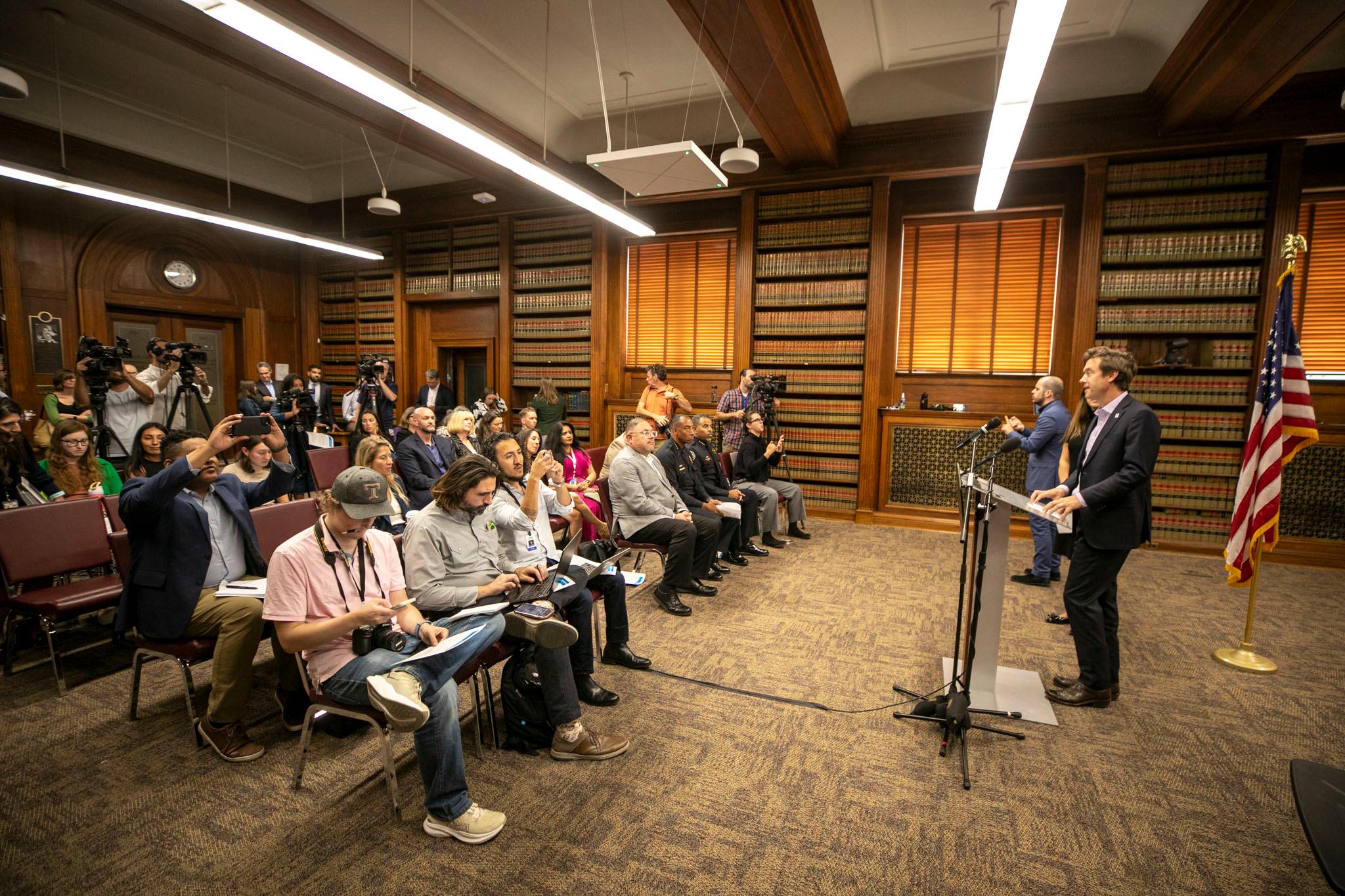As a kid in school, MiMi Luong was flipping through a history textbook when something remarkable caught her attention. It was in a section about the Vietnam War: a photo of the first documented arrival of a Vietnamese refugee family to Colorado. She instantly recognized the man stepping off the bus from Oklahoma.
"That's my dad," she remembered thinking to herself. "I went home and I showed my parents, and I think I kept it. I never returned it."
In 1975, Thanh Luong, MiMi's father, arrived in Denver and became part of a new wave of Vietnamese business owners to plant roots along South Federal Boulevard. He found his way to the state because his brother was attending the University of Colorado, but he moved to Denver's west side out of necessity.
"Most of the people had low income, so they came over here," he said.
Before long, more displaced Vietnamese families joined his along Federal, and many saw opportunity.
"They tried to open Asian shops like a market, gifts, something Asian people needed," he said. Federal, at that time: "It really needed new development."

So Thanh and his brother purchased the land that is now the Far East Center, the iconic shopping center with the giant arch above its entrance, and Vietnamese-owned businesses flourished alongside the auto shops, eateries and Mexican bakeries in the neighborhood. Thanh's business began as a video rental store, but has since transformed into the sprawling Truong An Gifts shop. Thanh can usually be found behind the register, especially as their annual Lunar New Year celebration draws close. MiMi and her husband are gradually taking over operations as her parents get older.
There hasn't been a whole lot of investment in the South Federal corridor since Thanh opened his business there, but that's poised to change. City and state agencies are preparing for a bunch of new work that aims to make the stretch safer and, crucially, a destination for Denverites and visitors alike. For some, these two goals are deeply intertwined: If the community has unified organization and vision for a cultural district, they might also advocate for better infrastructure along the busy boulevard.
These are the four big projects reshaping South Federal
1. CDOT is planning to build medians along Federal from Alameda down to Vassar. The agency says this infrastructure will "improve pedestrian safety by building a median to separate traffic on the heavily traveled section of South Federal Boulevard," though the project might end up benefiting drivers more. Medians don't necessarily mean safer passage for pedestrians, especially on a boulevard like Federal.
2. Denver Public Works is planning to turn Federal into a "green boulevard" by installing drainage areas that will divert stormwater for treatment before it hits natural waterways. The channels, which will be built along sidewalks between Alameda and Mississippi, are meant to address "one of Denver's highest priority basins in most need of stormwater quality treatment." They'll have some kind of foliage built into them, which will also help reduce urban heat island effects, impact air quality and create prettier and "safer environments for pedestrians and transit users."
3. WalkDenver and the West Denver Renaissance Collaborative have begun a pilot "placemaking" project that aims to "create a strong sense of place and pride" along the corridor dubbed "Little Saigon," where many Vietnamese families have long owned businesses. The groups are taking community feedback in a poll, open through the end of February, that will help them decide how to use existing grant money. Something like new signage, an enhanced bus shelter or decorative sidewalks could appear as an attempt to make Little Saigon a destination and begin to shape the corridor in a more pedestrian-friendly way. You might think of the big "W" logos and spiffy bus shelters along West Colfax as an example of this kind of thing. The placemaking advocates are also considering creating a new business improvement district (BID) in the area that could raise funds for more of these projects in the future.
4. In 2019, the city will begin a "transit alternatives analysis" for the corridor, which would analyze how buses, streetcars and the like might be better used. WalkDenver Executive Director Jill Locantore said it's still "just a line item on the budget," nothing in motion yet, but she thought it ought to be included since expanding transit fits hand-in-glove with safety and equity goals for the boulevard. Denver and Aurora conducted a similar study a few years ago in conjunction with the Regional Transportation District and the Denver Regional Council of Governments on Colfax.
Could Little Saigon become a true cultural district?
Nga Vuong-Sandoval was very young when she, like Luong, left Vietnam as a refugee. She grew up along the South Federal corridor, and remembers when the giant arch was built at the Far East Center.
"I remember vividly," she said. "I thought, 'Wow, I can't believe we have something like this in Denver.'"
Vuong-Sandoval now represents the Vietnamese community in talks with the city and state on these projects. It should be noted that she prefers the spellings "Sài Gòn" and "Việtnamese," not the "colonized Western versions" that are used colloquially and in project documents, and which we use in this story.
She said she imagines new life for the neighborhood: "not just a landmark, but a centerpiece" for Asian cultures. It could be a place where people slow down to shop and dine that feels like its own world within the city. And, she added, this would be a cultural district that also includes their Latino neighbors.
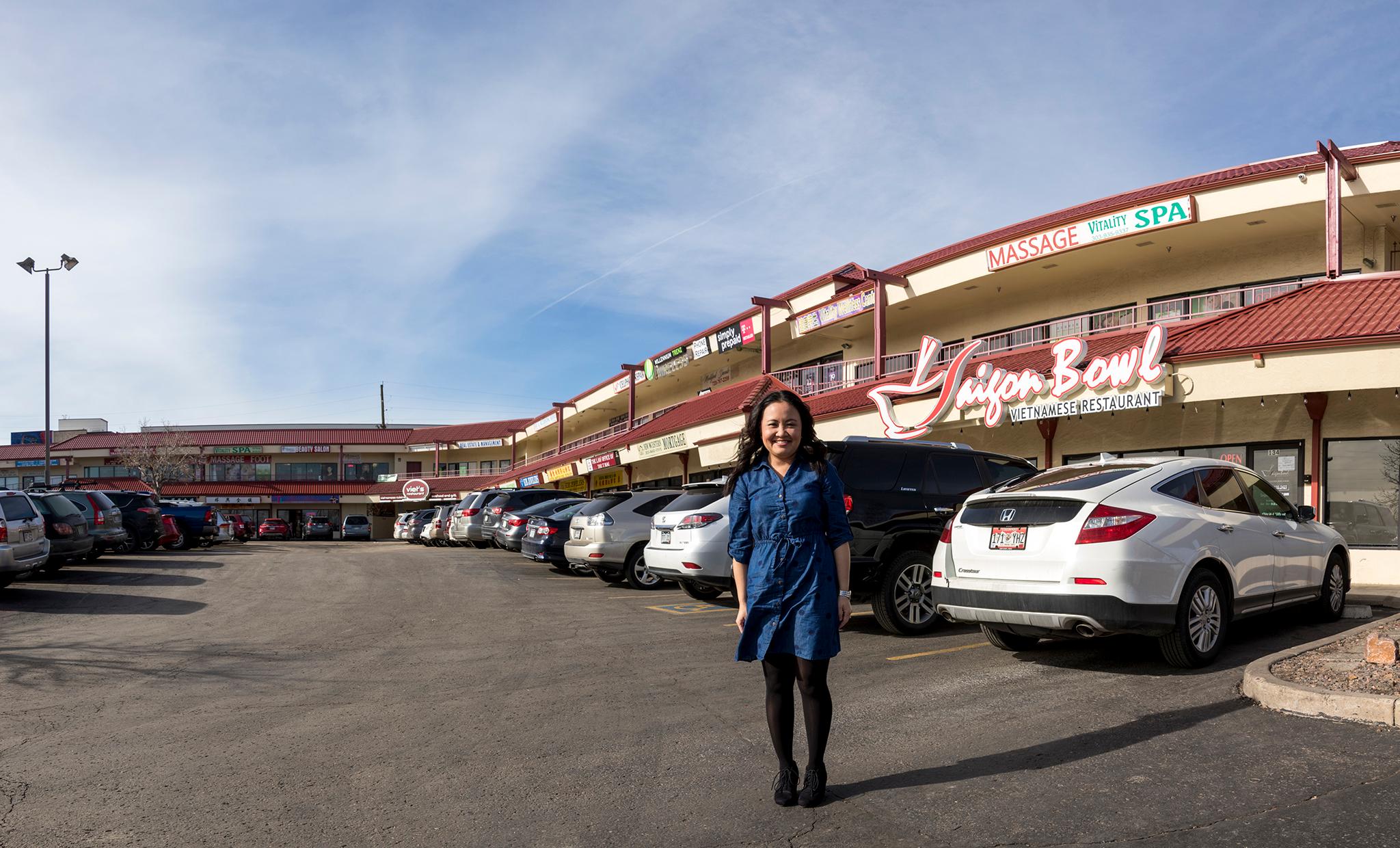

But a big change doesn't seem likely to everyone.
In his younger, more idealistic years, Michael Ye, MiMi's husband and Thanh's son-in-law, said he might have imagined Little Saigon could become a cultural district like the China and Korea towns he's visited in California and Texas.
"Ten years ago, I would have said I would have loved to see that. Now, you ask me," he said, "I'm a realistic person."
It's hard for him to imagine South Federal looking much different. Now that he has kids, 10 years into the future feels like hardly any time at all. He doubts the neighborhoods surrounding Little Saigon and the Far East Center will ever look quite like the districts he's seen in other cities.
"Cosmetically, it'd be nice, but not on the list of priorities," he said.
Safety measures, on the other hand, would be most welcome.
A 2017 Vision Zero analysis of Federal, not limited to the Little Saigon area, found that the rate of fatalities on the Boulevard is "20 times higher than the urban rate on Colorado roadways." Another 2017 report by Public Works estimated that as many as 40,000 vehicles travel on Federal every day.
Though he lives in the Tech Center, Ye drives the corridor all the time. He's been in an accident himself, so he knows firsthand how dangerous it can be.
"If it makes the neighborhood safer, then by all means," he said, bring on the projects.

Thanh, too, said a median might help control traffic, but he's still skeptical.
"Denver is booming," he said. "More people are coming in, and I don't know. Maybe [it's] good for business, but sometimes it's not good for traffic."
A little ways south, Sergio Amaya shared a similar opinion behind the counter at Tortilleria La Pasadita, his family's bakery.
"Everybody comes in their cars," he said. Medians and sidewalk projects, he said: "I don't think will help much."
In the short term, Amaya worries that construction will hurt his business. It's a fear that Vietnamese business owners have also expressed to community leaders who are working with the city and state on these projects.
"I saw it happen down there at 6th," where a similar median project began last summer. "I know it's going to take months and business is going to come down."
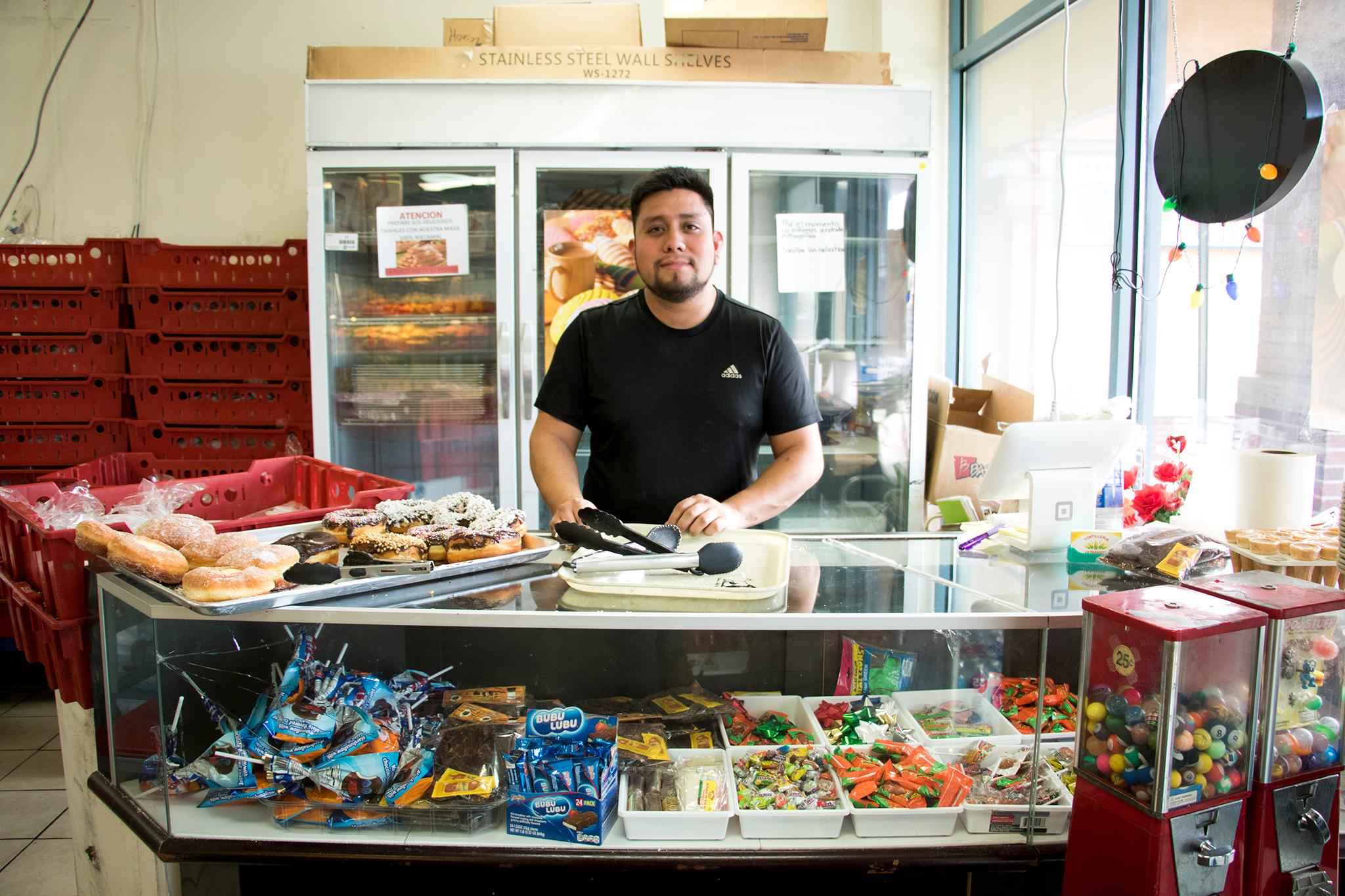
But WalkDenver's Locantore said battling doubts like these is just part of the process: "It's really hard for people to imagine a world different than it is today."
"That's the whole idea behind these demonstration projects, we don't have enough money now," she said. "But we can do a whole block and we can implement something that gives people an idea of what it could be like, spark their imagination and get them excited about the possibility of change."
Besides, Locantore added, Federal's mortality rate leaves the city with a "moral imperative" to do something. The transit study and early placemaking efforts are first steps toward some kind of action that could help save lives.
And, actually, these two goals might be dependent on each other
Back in 2013, City Councilman Paul Lopez helped organize business owners to officially name the shopping center at Federal and Mississippi "Little Saigon," a feat that's still marked by a small sign over the sidewalk.
The idea, he said, was to "get them to invest in this vision, have ownership of it and then take it from there."
That concept is still in play as stakeholders gather to discuss a new BID that might take the Little Saigon idea and help it grow. If the community gathers around their cultural identity, they could generate the local power that's also needed to make it safer.
"The vision down the road is to create this cultural district with art, placemaking, that's streetscaped," Lopez said, "that's achieved only through a business improvement district."
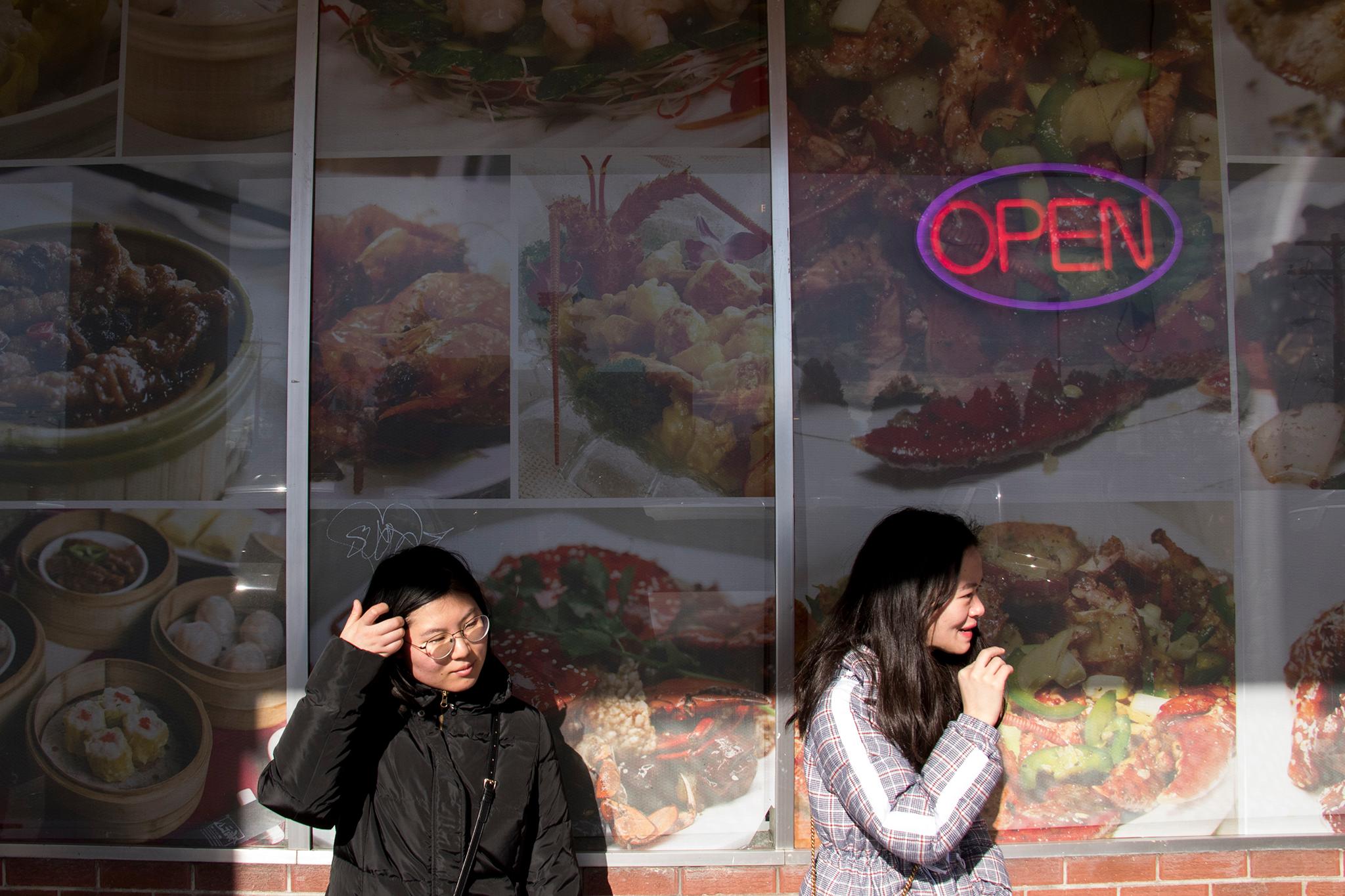
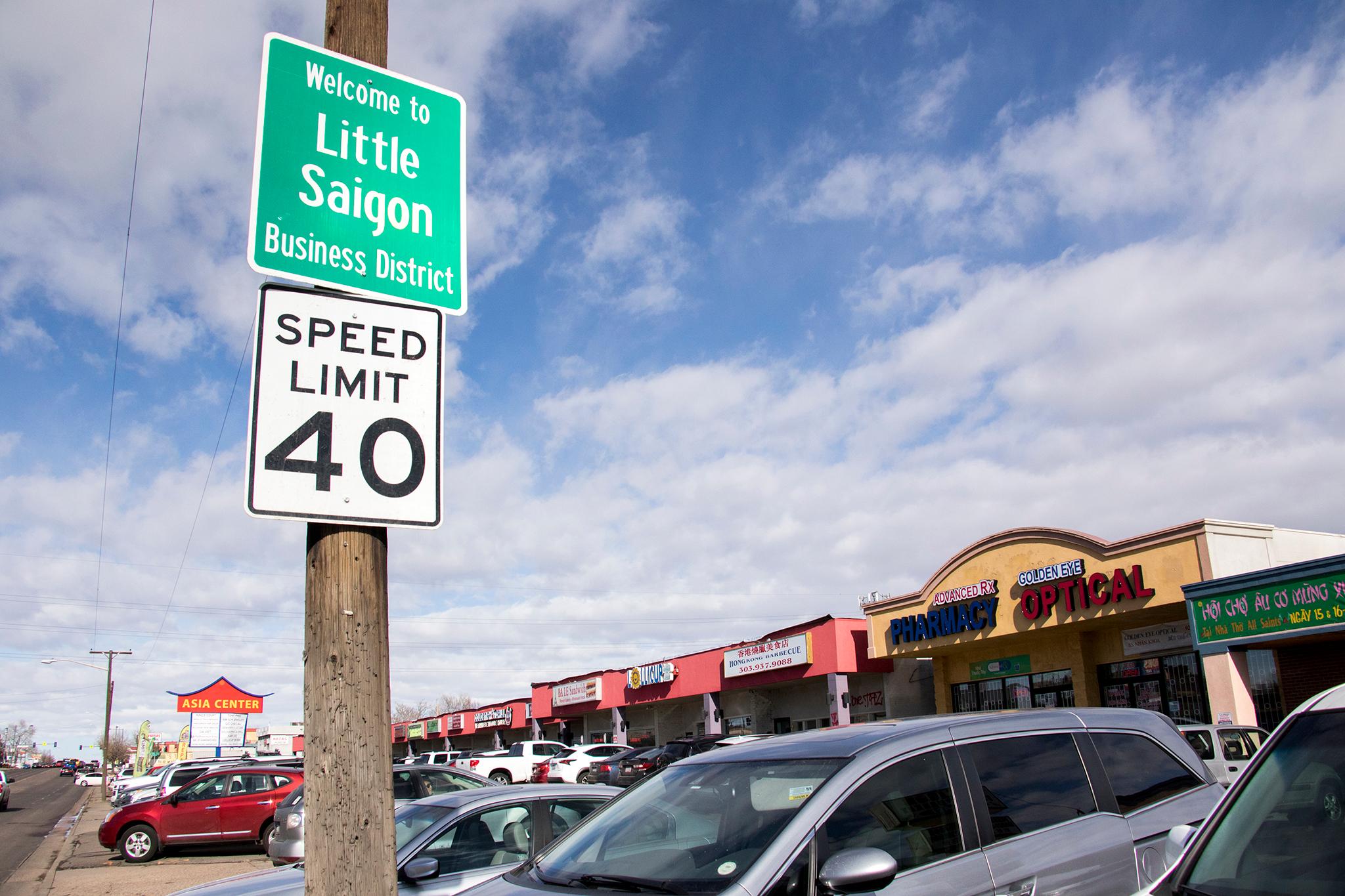
While WalkDenver is beginning with a project that feels more about neighborhood pride, Locantore said it will also drive safety improvements in the future. The money for the city and state projects is already slated, but she added that there's a "real opportunity for districts to step up and also play a role, generate their own funding and have more direct control of what's happening."
WalkDenver isn't in the business of setting up BIDs around the city, but rallying the neighborhood around the placemaking effort could mean the social infrastructure will be in place when it's time for other improvements.
For Vuong-Sandoval, better infrastructure is a streetscape that's culturally centered.
"I would love to see an open space of some sort," she said, something "more communal" that's "culturally in line" with Asian values.
And that's a concept that many of South Federal's business owners can get behind. Every Vietnamese-born business owner we spoke to said the district has been central in passing their culture to their American-born kids.
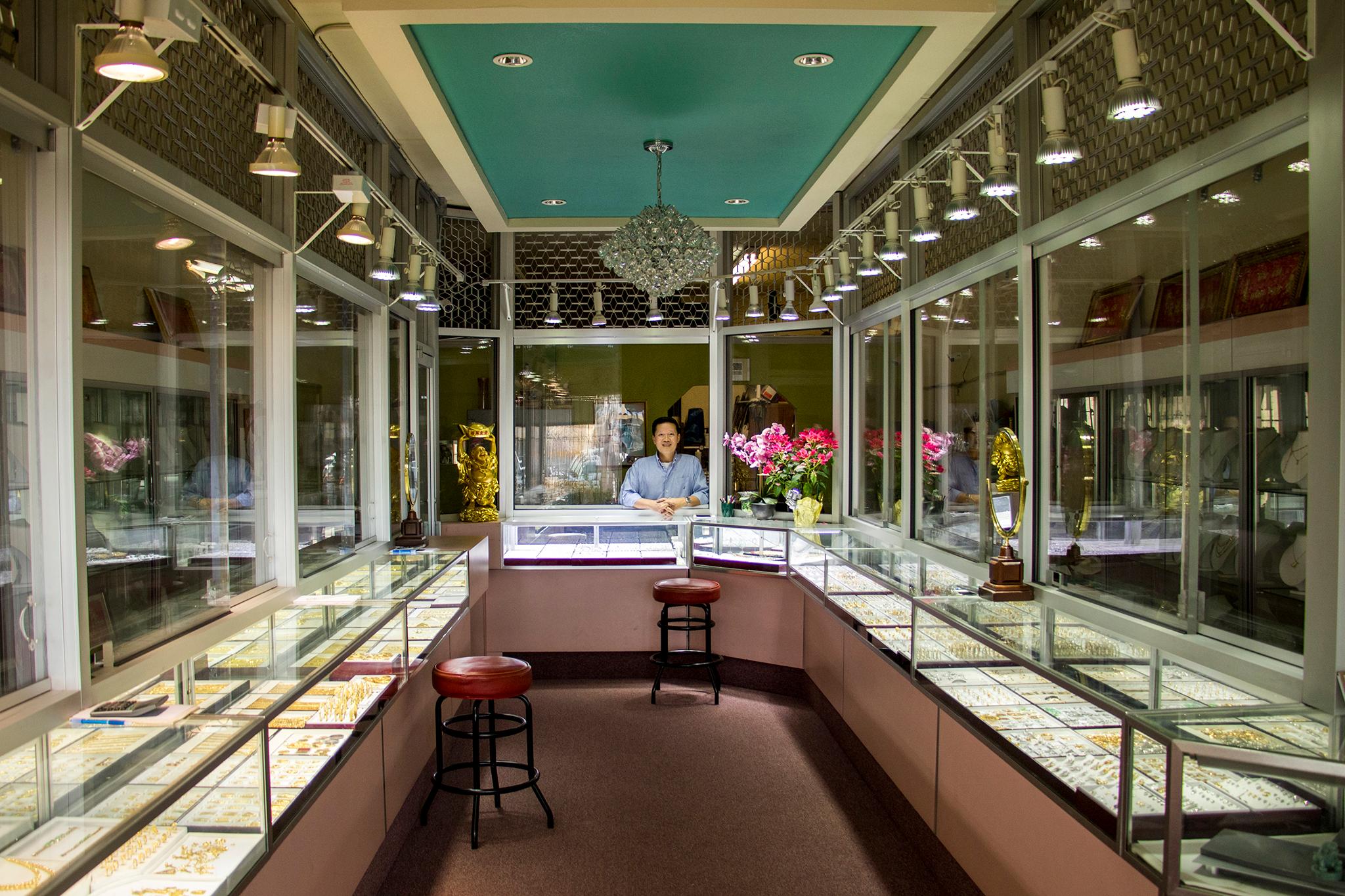
MiMi Luong grew up in her parents' shop at the Far East Center. Even though she earned a degree in fashion design and still plans events, she said she's always been drawn back to the business, the place her family built when they had nothing.
"This is the heart," she said, and now the store plays a role as she teaches her own kids about their history.
"It's not just about the foreignness of it, it's about us maintaining who we are," Vuong-Sandoval said. The Asian community needs a place in Denver that feels like home, but it can only get better if it also becomes attractive and secure.
"We've been waiting for something like this. We haven't had any major investment in that neighborhood up to now," she said. "This is only the beginning."

